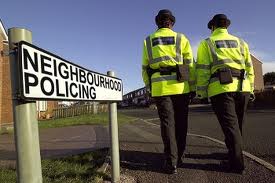Analogue law in a digital age
Last week (31 January 2018) Gavin Hales (@gmhales) of the Police Foundation published an interesting report exploring the nature of sexting and how the police should respond to it.
Entitled Sexting surge or a conceptutal muddle? The challenges of analogue law and ambiguous crime , the report charts how the law and policing practice is struggling to keep up with our changes in behaviour in the digital age.
What is sexting?
‘Sexting’ is defined by the National Police Chiefs’ Council as the sending and receiving by children and young people of ‘youth produced sexual imagery’.
While there is no doubt that sexting can be extremely malicious and hurtful — when a young person is pressured into sharing images of their sexual parts which are then widely shared among peers and others, at other times it can be entirely consensual and gives rise to concerns about whether young people should be criminalised by a form of digital flirting/petting .
Sexting results in a digital audit trail in the way that adolescent fumblings never did in the past, and digital technologies make the reproduction and distribution of images incredibly easy. Here it is unavoidably relevant that the main obscene publications laws governing ‘indecent images of children’ date from 1978, very much in the pre-digital era when smartphones, ‘nude selfies’ and the ‘viral’ circulation of images were unheard of.
The legal situation
The law is complex and often multiple offences are technically committed in one case. Mr Hales takes a notional case in which a 15-year-old boy whilst online asks a 14-year-old girl that he knows at school to send him pictures of her breasts and she does so.
The police Counting Rules state that these events, taken at face value, should result in two crimes being recorded:
One crime of sexual activity involving a child under 16 (class 22B – 22/24) against the male. One crime [of taking/making/distributing indecent photographs or pseudo-photographs of children] (class 86 – 86/2) in respect to the female who forwarded the images unless she was unduly forced into doing so.
If the boy was then to forward the photo to five of his friends, he would be committing a further offence. If these friends retained the images and/or forwarded them on, they too would be committing a crime.
Police response
Police services are encouraged always to record crimes which are reported to them. There are exceptions, including less serious crimes in schools, where there is a general presumption that they will be dealt with as disciplinary matters by schools.
Sexting offences, falling under ‘obscene publications’ laws, constitute ‘serious incidents’ and must therefore always be recorded as crimes once reported to the police, whether inside or outside of a school environment. Of course, schools can – and many apparently do – choose not to involve the police at all, and in at least some cases police forces actively encourage schools to deal with sexting as a disciplinary matter where there are no aggravating factors.

Conclusion
Hale’s main conclusion is that there exists a ‘conceptual muddle’, which results from the interaction of four factors:
- The law is antiquated, being written in the pre-digital age, and didn’t anticipate the phenomenon of children taking and distributing intimate or ‘indecent’ photographs of themselves – which are defined as criminal offences.
- The police crime recording and counting rules and practices as they apply to these cases can be complex and ambiguous, particularly when it comes to thinking about whether and how to classify those involved in sexting cases as suspects, victims or otherwise. If they are applied inconsistently, then that would limit the ability to say anything about the nature of ‘sexting’ offences and indeed crime trends between forces or over time.
- Attempts to avoid ‘criminalising’ children, including guidance on the future disclosure of allegations recorded by the police against children in ‘sexting’ cases, for example if they want to work in healthcare or childcare. A particular issue is that guidance and the values and judgements that inform them or are used to interpret them may change in the future.
- The publication of crime data – by the NPCC in the present case – with limited detail and a lack of caveats, leaving the reader unsure how to interpret them.
Hales is concerned that children who take indecent images of themselves, which are then used to blackmail or bully them or that are circulated without their consent, may be deterred from reporting their victimisation to the police given that to do so they must first admit they have broken the law.
He suggests that there may be a strong argument for establishing if that is indeed an issue, and meanwhile propose that consideration be given, as the basis for further discussion, to some very narrow exemptions to obscene publications laws for children who photograph themselves, but also perhaps in the case that they willingly send or receive intimate photos with the consent of the other party (if they are also a child and at least 13 years old).
Hales recommends that the emphasis should be on identifying and taking action in the case of any abuse, coercion, duress or exploitation by third parties, as has always been the express intention of the existing law, while also equipping children with the right information and skills to navigate their social worlds without endangering themselves or others.
While the approach to sexting cases adopted by police forces and others has moved quite a long way in recent years, it appears there is still along way to go before the law and policing procedures catch up with rapidly changing social norms.
In my view, this is a particularly tricky issue; legislation and formalised procedures are not always the most effective tools to deal with such delicate situations. It won’t be easy to find a solution which protects young people from abuse whilst at the same time not criminalising others for what is common teenage behaviour. It seems particularly bizarre that a young person who is pressurised into sharing sexual images of her/himself has technically committed an offence.








One Response
I wonder if more can be done in schools, as I believe that young people do not understand the consequences of their actions in many area’s of potential criminal events. I do believe that if young people knew what the cost in later life may make them not do it